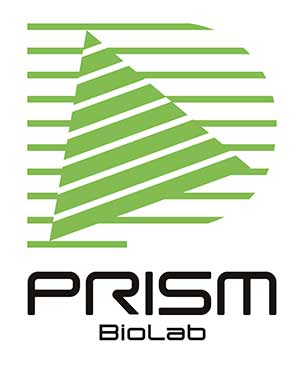Published on: 8月 7, 2024
Cyclic peptides gather interests of many pharmaceutical companies due to the known high potency against various protein targets. The conformationally restricted structure with three-dimensional architecture has enabled us to target proteins called undruggable so far. There are still scarce number of cyclic peptide drug in the market but the number is increasing in this century.1)
The downsides of cyclic peptides are difficulty in design and synthesis. Macrocyclization of a linear peptide by a natural amide bond is often fails due to the entropically unfavorable structure of the transition state of macrocyclization. Thus cyclic peptides are generally synthesized by the use of unnatural bond formation like ring-closing metathesis (RCM) and thioether formation. There has been success but it is still a challenge to establish an efficient and general synthesis of cyclic peptides.
Here is an interesting paper on efficient construction of 8k scale cyclic peptide library.2) The authors’ aim was to establish a reliable and straightforward way to reach orally bioavailable cyclic peptides. Their workflow enabled synthesis of nanomolar affinities against thrombin and 18% bioavailability in rat at the maximum.
Their cyclic peptide library design is rather simple. Each molecule consists of two amino acids including natural and unnatural, cysteine, carboxylic acid, 2-aminoethanethiol and a linker of two thioethers. Owing to the presence of a variety of linkers, they easily applied combinatorial chemistry to enlarge the library through simple transformation. After synthesis of cyclization precursor with two amino acids with cysteine and 2-aminothanethiol, cyclization via linker and the following acylation are performed in one-pot to furnish the cyclic peptide.
According to their analysis of the small cyclic peptide library, MW PSA, HBA are beyond rule of 5. But still some of the compounds possess cell permeability and has moderate metabolic stability. Their approach is fairly combinatorial and diversification by synthesizing a sub-library enabled them to produce more stable molecule with acceptable range of bioavailability.
Small cyclic peptides would have less conformational flexibility than macrocyclic one because of less rotational bonds. It also has the potential to form internal hydrogen bonds to mask the hydrogen donor and acceptor, which not only raises cell permeability but also works as the lock of its conformation.
We now have an access to structural prediction model for cyclic peptides.3) The authors did not show structural analysis on their original cyclic peptides, but it would be beneficial for design and further optimization of peptide structures. With the combination of ADMET prediction for better bioavailability, a technology like this small peptide library would accelerate drug discovery for sure.
Cyclic peptides, or even linear peptides potentially, have a synergy with PepMetics®. PepMetics® molecules have no HBD on the basic scaffold and it is obviously beneficial for good cell permeability at the outset. We’ve already demonstrated sequence-based mimetics by awesome collaboration with GeneFrontier.4)
PepMetics® scaffold is tunable and has a potential to fit the conformation of peptides intrinsically. We are eager to collaborate with you to perform a pilot study to see if the technologies merges to give rise an artistic innovation.
1) https://doi.org/10.1039/D1CB00154J
2) https://doi.org/10.1038/s41589-023-01496-y
3) https://doi.org/10.1093/bib/bbae003
4) https://doi.org/10.3390/ph15121506

